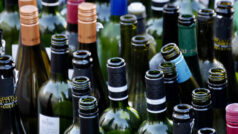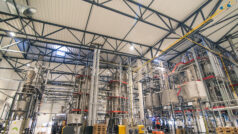California disposed of 33.2 million tons of material during the year, compared to 31.2 million tons in 2014 for residential, business, and industry sectors. CalRecycle said that the disposal increase was accompanied by a drop in the statewide recycling rate. Greenhouse gas emissions would have been reduced by about 2 million metric tons of CO2 equivalent if the increased 2 million tons of material had been recycled rather than going to landfills.
The new figures mean that Californians disposed, on average, 4.7 pounds per person per day. This is an increase from 4.5 pounds per person per day in 2014. Organic material such as food waste and grasses accounted for 40% of the disposal.
Disposal rates usually increase during economic upturns. California’s statewide diversion rate of 63% (the proportion of waste that is diverted from landfills) continues to outpace the 50% diversion mandate set in law for local jurisdictions. However, increased disposal and missed opportunities to use organic material challenge the state’s ability to achieve environmental goals.
“The state’s economic resurgence is impressive, but we have to find ways around the barriers to consistent, sustainable reductions in disposal,” said Scott Smithline, a CalRecycle official.
“Whether it’s addressing the relatively low cost of disposal or the need to create greater demand for diverted materials, we have to change the equation to one that supports the highest and best end use of discards,” added Mr. Smithline. “Disposal-related greenhouse gases, and the public health and environmental problems they produce, don’t take a break whether the economy is up or down,” said Mr. Smithline.
Smithline highlighted that while landfilling is typically considered cheaper than recycling, the costs of recycling do not accurately reflect the money saved by reduced greenhouse gas emissions; money saved by using recycled feedstock as opposed to virgin feedstock in material production; and the money saved on water and fertilizer for agricultural production when organic material is recycled into compost and applied to soil.
The low cost of dumping recyclable material into landfills undercuts all of these benefits, noted Mr. Smithline.
The AB 341 (Chesbro, Chapter 476, Statutes of 2011) legislation set a statewide goal of 75% recycling and required businesses and public entities that generate 4 cubic yards or more of waste each week to recycle. The AB 1826 (Chesbro, Chapter 727, Statutes of 2014) was passed recently, requiring businesses and multifamily complexes that meet certain thresholds to recycle organics.
These two laws, in addition to CalRecycle’s initiatives are designed to help divert material from landfills.
CalRecycle continues to provide technical assistance as well as issue grants and loans for businesses that produce and use recycled feedstock rather than virgin material. CalRecycle also works with other government agencies to increase demand for recycled materials and to provide other forms of financing for recycling manufacturing businesses.










